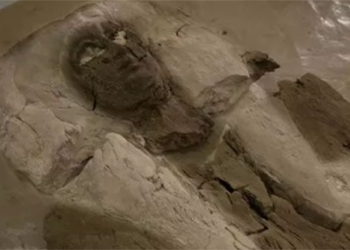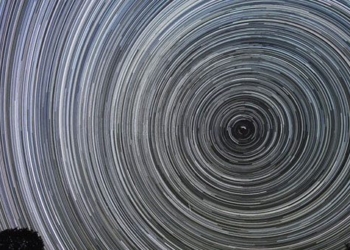Some scientists hope to gain a better understanding of volcanic activity by studying how circular smoke rings form above them.
The New York Times notes that some volcanoes can emit circular vapor rings that float near their craters. These rings typically last for a short duration.
Such phenomena have been observed at various volcanoes around the world, but it is unclear how they are generated. Although these white smoke rings can extend for hundreds of meters, they exist for a brief period and are unpredictable, making them challenging for scientists to study, according to National Geographic.
They have occasionally been seen at volcanoes such as Etna in Italy and Eyjafjallajökull in Iceland. Researchers have now discovered new clues about how gas bubbles create these unusual phenomena at certain volcanoes.
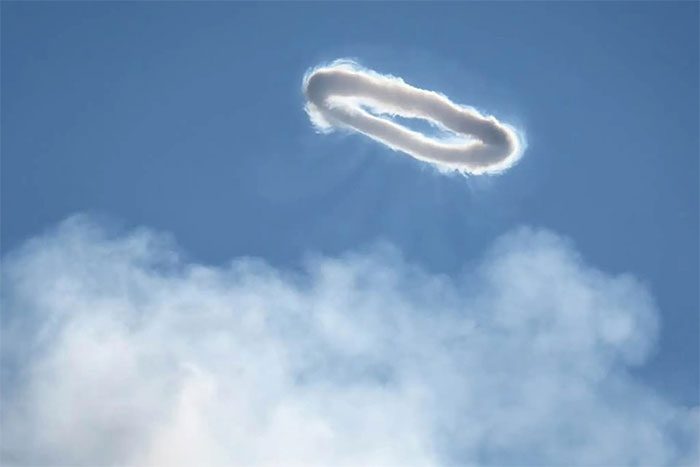
Circular smoke rings appear above the crater of a volcano. (Photo: New York Times).
Smoke Rings Like a Smoker
In addition, Simona Scollo, a volcanologist at the National Institute of Geophysics and Volcanology in Italy, stated that most volcanic research focuses on violent eruptions that threaten human life.
However, “we want to understand how volcanoes operate, not just when they cause disasters for people or when they are extremely dangerous,” she said.
Thus, she and her team studied these ring-shaped smoke plumes, which are often associated with relatively mild volcanic activity. They published their findings last month in the journal Scientific Reports.
The New York Times points out the similarities between how volcanoes produce these circular smoke rings and how dolphins blow bubble rings or how smokers exhale smoke. For volcanoes, they are often referred to as smoke rings, although they are primarily composed of water vapor.
Regarding this, Boris Behncke, a volcanologist at the National Institute of Geophysics and Volcanology in Italy, stated that despite the name, these smoke rings are not actually made of smoke. Instead, they are largely composed of condensed gas, primarily water vapor, expelled from the volcano’s crater.
The elements released from the volcano’s mouth (or a smoker’s mouth) slow down when they meet the surface, allowing the gas to rise.
However, it is unclear precisely what occurs inside a volcano to create these circular smoke rings. Not all volcanoes can produce such rings.
Dr. Scollo’s team searched the Internet and reviewed footage to find vapor rings captured on camera. The rings they found had diameters ranging from 9 to 198 meters and lasted up to 10 minutes. These rings are typically white, sometimes tinted gray or brown from ash.
Strong winds can prevent the formation of rings or cause them to exist for a short time. On the other hand, the rings—formed by a plentiful supply of volcanic vapor—can gradually drift into the sky and begin to expand. Eventually, as they evaporate almost completely, the rings disappear from sight.
In 2000, when Etna emitted numerous ring-shaped smoke plumes, Jurg Alean and Maro Fulle—two volcanologists at the observation station on the island of Sicily—told the BBC that the ring-shaped smoke was likely the result of gas streams escaping rapidly from narrow openings in the volcano.
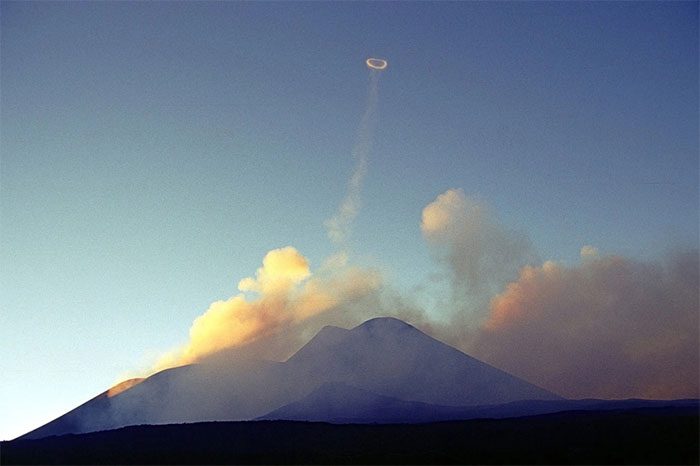
A vapor ring rises from the crater of a volcano in Italy in 2000. (Photo: New York Times).
Researchers modeled the possible movement of gas and bubbles inside the volcano’s crater. For vapor rings to form, small gas bubbles must merge and rise through the magma to create pressurized gas pockets.
When such pockets burst, they can expel gas rapidly enough to create a circular smoke ring.
However, the crater must also be round or slightly concave. Volcanoes with elliptical craters often cannot form rings. The research team noted that if they have such shapes, they would distort or cause the rings to wobble.
Combining observations from photos and videos with that model allowed the research team to identify the physical conditions necessary to generate circular smoke rings.
Limitations
David Fee, a volcanologist at the University of Alaska Fairbanks, believes that further understanding of volcanoes can be gained by studying the conditions necessary for vapor ring formation.
For instance, the amount of water vapor rising into a ring may reveal something about the volcano’s magma. Volcanoes that emit vapor rings also tend to have more fluid lava.
However, Dr. Fee warns that there are limits to what circular smoke rings can reveal about volcanoes.
For example, when a volcano becomes hazardous, similar to how Mount St. Helens continuously emitted gas and solid materials in Washington, it will not produce circular smoke rings, according to Boris Behncke from the National Institute of Geophysics and Volcanology in Italy.
Dr. Behncke has witnessed hundreds of circular smoke rings, including many at Etna during a period of intense volcanic activity.
In 2000, Mount Etna expelled thousands of circular smoke rings over several months from one of its four craters.
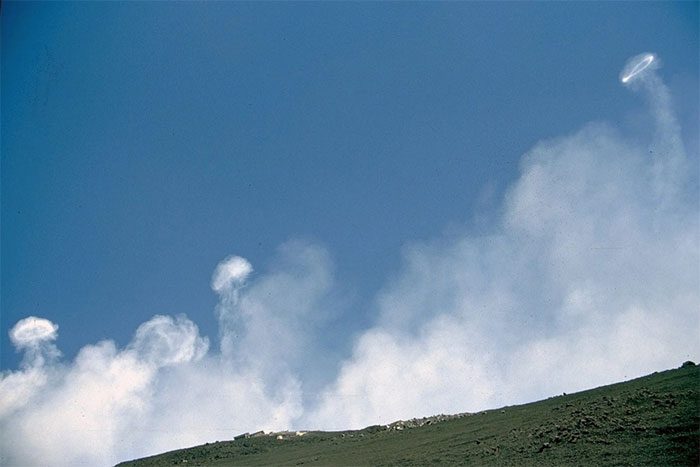
Circular smoke rings at Mount Etna in 2000. (Photo: New York Times).
“It was a spectacular and unprecedented coincidence—both at Etna and any other volcano. Sometimes, you would see 5 or 6 rings consecutively rising into the sky,” he said.
Dr. Scollo and her team hope to monitor these unusual occurrences using high-speed cameras and gas explosion sound recording devices. Capturing images of the rings as they appear may not be too difficult.
“This happens at volcanoes perhaps more often than people think,” Dr. Behncke said.








































